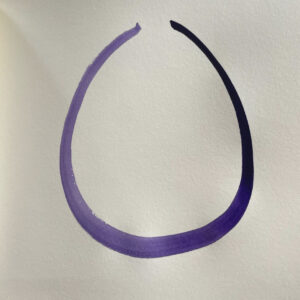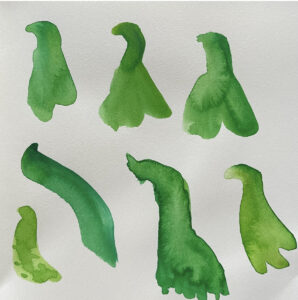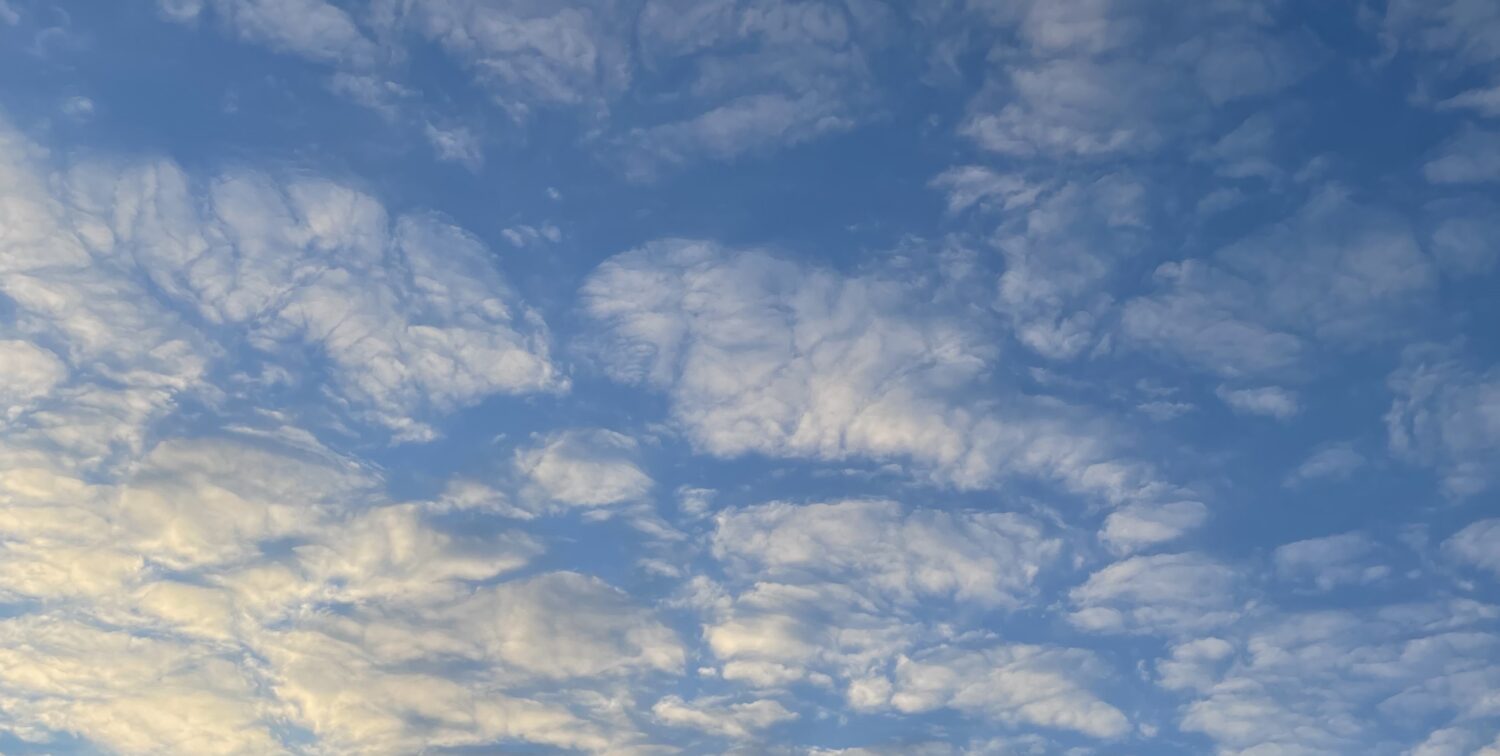“Take time to notice your breath. And the quality of your breath. You have to be able to feel the lower half of your body. By endeavoring to improve the quality of your breath, you are helping untangle the parts of you that are getting in the way.“
Norma Wong
Breath—when we are sparked, under stress, under pressure, or in conflict—is often shallow, quickened, or stuck in our throats. Yet, these are the times when we need our breath most. I know the push and pull of a doubt spiral, anxiety related to giving or receiving feedback, anticipation when discussing racial tensions (in a mixed-race group, across power lines), and the activation of my “insecurity program” (as one of my coaching clients calls it when internalized systemic insecurity shows up). I felt overwhelmed when reading a text that childcare will be closed for at least a week due to COVID exposure or receiving a call that my thyroid biopsy came back as cancer. These experiences create strong somatic sensations that my breath has accompanied me through—our breath can be an anchor. It helps regulate our nervous systems and nourish our internal organs. Breath practices and awareness are the core of my spiritual practice.
But breath isn’t only measured (or understood) in moments of overwhelm or anxiety—breath can be playful and joyous and arousing. My breath has also come with me for new love in a “Take My Breath Away” Top Gun-queered kinda way. A quick breath and long exhale allows me to dive, swim, float, and dive again. Intentional forceful breaths and held breaths helped me (in the final stretch) to release a new human into this world. Breath is sacred and tethers us to life. I am in awe. We need breath to reconnect to each other, our power, and our source—that which supports us to show up resourced, whole, and connected to our values and purpose.
When my breath feels constricted, I can choose to notice, get curious, and recalibrate it. Our breath is a link between our body and our emotions and emotions are couriers of wisdom messages.
This practice of noticing our breath, listening to its signal, and choosing self-regulation is a part of inner work. I’m not claiming that this is an easy practice. In fact, I can hear my teacher, Rosie Abriam saying, “it is a lifelong practice.” In some cases, I may need to release pressure, pause to reevaluate the situation, reset my own energetic boundaries, or all three. This supports me to connect to my wholeness, allowing me to act from my center, my wisdom, and my best self, rather than to react from a part of myself that may be sparked or acting upon white dominant cultural norms.
Together, our breath has the enormous potential power to connect us to our individual and collective wholeness. From there, we have greater capacity to live our vision of liberation together in the present moment. In contrast, when we act from our hurt, scarred, or white supremacy parts, we will bring harm to our teams, groups, networks, movements, and systems. From this fractured stance, it is more likely that conflict is divisive rather than generative and the repetition of white supremacy habits may ensue.
Our breath can help us create space to witness one another more fully, deepen awareness about our reactions, interrupt habits, and harness the wisdom of the emotions and the energy in the room. As leaders with this broader awareness, we can choose a liberating path. While breath isn’t a solution to oppression, more awareness of it, and the articulation of our collective breath, is a component of liberation. As suggested by Norma Wong and Rosie Abriam, with breath we can leap forward reconnecting to source.
Connecting, Cleansing, & Clearing
I’m out of practice sharing physical space with colleagues, peers, and community. Last week, as I participated in a collective, in-person breathing exercise, I got anxious and I felt my breath become shallow. I’m guessing that many of us are feeling tentative about gathering again as we come together and negotiate new boundaries about masks, hugs, handshakes, and the distance between us while we sip coffee. In this spirit, I’m offering three breath techniques that have served me as an individual—through time alone and connecting via Zoom—and before when I was regularly facilitating groups in person. These practices, individually and in community, offer a way to cleanse, clear, and connect.
A note on sound: Inviting in sound to make visible our exhale can help us develop an awareness of the condition of our own and those around us. Some people might be shy initially about letting out unfettered guttural sounds like ahhhhhhhhhh in shared space. Gina Breedlove, sound healer extraordinaire, taught me that the sounds emitted from each person’s vocal cords are like fingerprints. Our sounds can’t be wrong and they are natural. So I encourage us all to let them flow freely in the practices below.
Collective Yawn: Connecting

I learned this practice from Kit Yan at a National Queer Asian and Pacific Islander Convening sometime around 2013. Kit is a poet, writer of musicals (check out Interstate), and friend. Yawns are one way we bring more oxygen quickly into our bodies and expel carbon dioxide more effectively than deep breaths. Like laughter, yawns are contagious. At the start of a day or a meeting, taking a gigantic collective yawn can dust out the cobwebs and creaks and invite us into more ease and connection in our social relationships.
Start standing or sitting. This is a yawn for the whole body and includes sound. I start with my hands by my side in fists then reach them up overhead as I open my jaw wide, inhaling and opening my palms above my head as I take a deep exhale, letting out an exaggerated sigh noise. Often my eyes will water with the release. Let the water flow. I suggest demoing for a group and then inviting them to join you for at least two more yawns with emphasis on the releasing sigh.
Diaphragm Shake: Cleansing

I learned this practice from Kiki Lovelace and Michelle Cordero when I was training with them at Innerstellar Yoga and Flow in Berkeley, CA in 2014. Both Michelle and Kiki are also dancers and I feel the unique sparkle in dance really brings alive this breath exercise. Our diaphragms are muscles that help us breathe, they move down towards the earth as we inhale and move up towards the sky as we exhale. This exercise invites us to help release them with sound and inversion. It is excellent for resetting the energy in a group by literally shaking it out. Each person who leads it can bring their own sparkle to it.
Starting from standing with hands by your side, inhale a deep belly breath. Then, allow sound from your core to come out—yes, this is vulnerable and can feel somewhat silly as we hardly do it in public; it is farther on the spectrum of vulnerability than the above collective yawn. Shake your core, let your arms follow your core freely while simultaneously bending forward. Letting a sigh or ahhhhhhhh noise come out and warble as you shake your diaphragm. Inhale back upright with a long spine and repeat. Repeating the gesture so that there is a constant sound in the room may allow for those shyer about bringing their voice in to join. Take a few breaths to feel any shifts in yourself and the group and repeat as you feel moved.
This can also be modified for a seated position where you bend forward over your legs. Another modification option is to stay standing the entire time or use the back of a chair as support while bending forward.
7 Breaths: Clearing

I learned this technique from Tonika Sealy Thompson, an artist, student, diplomat, and dear friend. We would use this technique together to reset, cleanse, and release. If I’m wound up or feel anxiety taking hold (e.g. shorter, shallow breaths), this practice is my go-to. I also find it is great to clear out the day and help me find sleep at night. Tonika even once used this in a bathroom line to comfort a grieving woman and offer her release. There is a heart-kindness within this breath practice.
I imagine the seven breaths as steps on a waterfall. I create the waterfall quickly, like quickly pouring out a glass of water.
This isn’t a controlled pour, it is more of a quick dump. Therefore starting with an inhale, you then press the diaphragm up causing a rush of air out your mouth. Often a sound wants to accompany this release. A quick sigh. Don’t stifle this sigh, encourage it (this sound allows more release)! Try turning up the sound, try sharpening the sound, playing around, and having fun with it. Pause after seven breaths, feel into your body, feel into the room, and maybe sit in silence and stillness or invite another round.
May your breath be nourishing, strong, and easeful, always reconnecting you and us to each other and our sources.
Header Photograph & Paintings Credit: Alison Lin





